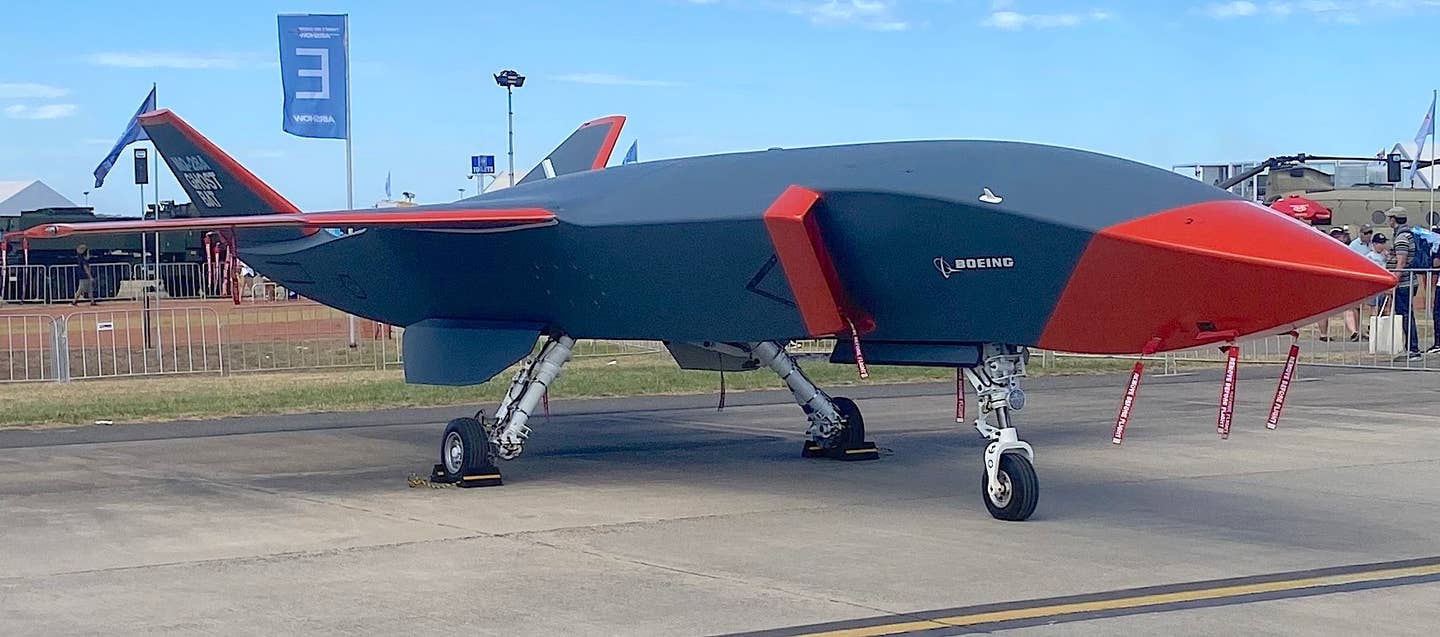Violation!
Everybody makes mistakes. But not every pilot makes a mistake that gets noticed by the FAA. If you do, does that mean your resume drops to the bottom of the stack at your dream airline? That all depends …
You saunter out to the mailbox expecting the usual: a utility bill or two a few pieces of junk mail, another credit-card statement that produces a mild state of depression; and, thankfully, a Victoria's Secret catalog that at least momentarily dissipates the thought that the cost of your flight training has brought you to the verge of bankruptcy.What's this? It's a form from the post office stating that you are the recipient of a certified letter ... and the return address is ... OHMYGAWD! ... from the FAA Flight Standards District Office. Your pulse rate triples.You charge down to the postal station with visions of your career going up in smoke, sign for the dreaded communiqu, tear open the envelope, and there it is: a Letter of Investigation (LOI). It seems that an airplane under your command was tracked by approach control radar as it punctured the local Class B airspace without a clearance. The ATC controller eyeballed your target to the home airport and, after a call to the FBO, you were identified as the pilot of N-such-and-such that just taxied in. There's no confusion about it: You were the only airman to have landed during that hour. The radar blip was you.Your LOI states the scenario, advises that the operation may be contrary to the regulations, and invites your side of the story in the next 10 days.Is this the end of the world? Will you be drawn and quartered? Will your dreams of zipping around in an RJ now necessarily be replaced by visions of flying night freight forever in a Duchess for Billy Bob Air?OK, crud happens. Let's deal with it from two perspectives: First, what is the FAA going to do with you; and second, what does an FAR violation on your record mean for a career?
The Feds Come Knockin'
The Federal Aviation Administration has essentially one of five enforcement avenues to pursue:
Administrative Action
In situations where the transgression is minor in nature, the FAA may opt for an Administrative Action. In such instances, the FAA considers several facts: The violation was not deliberate; not terribly unsafe; and did not demonstrate that the pilot was incompetent or unqualified.Presume, for example, that Inspector Gary Goodguy spent the afternoon at the local aerodrome and, during the course of a routine ramp check, discovered that a particular flight was conducted without a registration certificate on board. Chances are, the good Inspector can "educate" the errant pilot with either a Warning Notice or a Letter of Correction.A Warning Notice is a letter that recites the violation, indicates that the action is contrary to the regulations, states that the matter was corrected when the registration certificate was located on a flight school desk and returned to the airplane, and that the situation does not warrant legal action.A Letter of Correction is very similar to the Warning Notice except that the pilot agrees to take corrective actions in a manner acceptable to the FAA immediately or within a prescribed timetable.A Letter of Correction is often used in conjunction with the Remedial Training Program. Say, for example, a Cessna driver prangs the airplane during a landing roll by taking out a PAPI light or two. The investigating FAA Inspector -- rather than sidelining the airman by seeking suspension of the pilot certificate for 30 days -- instead offers a Remedial Training Program as an option in the initial Letter of Investigation. The training might include, say, three hours of takeoff and landing instruction with a local Designated Pilot Examiner. The program is a formal agreement between the pilot and the FAA, the cost of which is born by the aviator. Failing to adhere to the terms of the program can lead to a certificate action.An Administrative Action is not so serious, because it generally does not involve a finding of a violation and is not typically released by the FAA when an inquiry is made by a potential employer. The good news? The matter is supposed to be "expunged" from the pilot's records after two years.
Re-Examination
When hangar talk turns to "The 709 Ride," this is what they mean: Federal Law (49 USC Section 44709) allows the FAA to re-examine a pilot at any time provided that there are reasonable grounds. Two common circumstances resulting in a 709 Ride are accidents and minor FAR violations.The investigating Inspector will notify the pilot by certified mail, explain that a re-examination is justified based on a particular incident, and even specify what procedures and maneuvers will be evaluated. The aviator is requested to contact the FSDO to schedule a convenient time and place. If the pilot does not comply, the FAA attorneys will take action suspending the pilot's certificate until the re-examination is passed.If offered a 709 Ride due to a particular issue, sage advice is to take it ... and get some instruction prior to a checkride with the Fed. It might even be wise to suggest a re-test in lieu of any other action. Fortunately, a re-examination is not technically an enforcement action and, therefore, will not show up in the airman's file.
Certificate Action
The most commonly used action against General Aviation types is a procedure in which the FAA seeks to suspend or revoke a certificate for operational violations of flight rules, or whenever a violation reveals a lack of technical proficiency or qualification that is so serious that an Administrative Action or Re-Examination is inappropriate. In some extreme circumstances, the FAA may seek emergency revocation of the pilot certificate without the benefit of prior due-process.The ordeal can be long, involved, and expensive.Once a violation has been identified, the FAA will attempt to build its case by gathering evidence from a variety of sources, such as ATC or eyewitness observations, audio tapes, radar tracks, etc. The alleged violator will also be sent a Letter of Investigation by certified mail soliciting his perspective. Of course, the pilot may choose to respond to the LOI with his version of the matter, which may or may not have mitigating or exculpatory facts; or the alleged violator can ignore the Letter of Investigation, because there is no legal mandate to reply.A Certificate Action is quite complex and can have a dramatic bearing on one's career. Such action can be a certificate suspension of only 15 days to outright revocation. Thus, seeking the advice of counsel (yes, a lawyer) in such matters is more than justified, because very important procedural rights are in play, including an appeals process that could take the matter right through the NTSB to the federal court system.
Civil Penalty
Civil Penalties are commonly associated with violations committed by operators such as airlines, maintenance facilities, air taxi carriers and the like. In some instances, fines against naughty operators can be in the tens of thousands of dollars. Assessing fines against General Aviation pilots is somewhat rare.A certificate action must be brought against the pilot within six months of the incident so as not to run afoul of the "stale complaint" rule. However, the FAA has up to two years to seek a monetary forfeiture. For aviators facing "Civil Penalties," employing legal counsel is virtually a "must" since notification and procedural rules are daunting.
Criminal Action:
This is "The Hammer." Forge a pilot certificate, carry a gun on an airliner, fake an aircraft registration, or stick an illegal fuel tank in your Seneca and the guys with dark sunglasses from the Department of Justice take over. Lose a case here and hard time is the result.
Your Response Makes the Difference
So, what to do if you suspect that you have violated the regulations? If an operational error is involved, submit the "NASA Form" and provide data regarding the incident to the Aviation Safety Reporting System (ASRS). There is a misperception that the ASRS is a "get out of jail free" card. Not true. The violation will still show on the record, although the FAA will not be able to assess a sanction. But it is important to understand the limits of the program: The pilot has to file the ASRS form within 10 days of the incident; the violation must be unintentional; the pilot must not have been found in violation of the FAR in the past five years; and the pilot must be qualified.In terms of responding to the FAA in the face of a violation, there are two distinct schools of thought. On one hand, it seems as if the majority of legal professionals urge pilots to contact an aviation attorney first, above all else, and suggest not admitting anything to the FAA for fear of inadvertently self-incriminating. Members of AOPA's Legal Services Plan have easy and affordable access to legal counsel to help navigate the issues. But there are those who also say, if guilty, "take your medicine." The theory is this: FAA Inspectors do have some latitude in recommending sanctions, and a cooperative spirit can go a long way in securing a 30-day suspension rather than 90 days. Frankly, it is a "gut check."
Your Employment Prospects
What about 'fessing up to the job interviewer at an airline? You will be questioned about violations. How will an enforcement history be viewed? Here are some thoughts.From the majors to the regionals, every hiring executive consulted has said in, so many words, "Take responsibility. What did you learn from the experience? Never 'pass the buck' to someone else when the violation is clearly your fault." Nobody is perfect and, thankfully, reasonable employers understand that humans do make mistakes and may be willing to forgive and forget ... up to a point. What is that point?Gravity is, obviously, important. If you incurred a 15-day suspension as a private pilot for an altitude bust, that's probably no big deal. However, if you took an air taxi flight with an expired medical last month or buzzed the control tower, not good!Frequency is another consideration. One not-so-serious violation in all of your years of flying will most likely not weigh against you. But, if you have three run-ins with the sky cops, you have displayed a habitual pattern of misdeeds that could be a liability to the employer.What about any violation that has been expunged from your pilot records? Remember that an Administrative Action should disappear from your files after two years and a Certificate Action should go away after five years unless your certificate was revoked -- then the action never goes away. Well before the interview, contact the FAA's Airmen Certification Branch in Oklahoma City and request a copy of your airman's file. Determine if any violation ghosts still haunt your records. Then listen to the interviewer's question carefully. If your violation has disappeared from the FAA's files, what if the question is, "Have you ever had an FAA enforcement action?" Ah! How strong is your moral fiber?There is an ancient adage that goes like this: "Honesty is the best policy." When facing the tough questions about violations in an interview, have those words engraved on your brain!
For more about a career in aviation, check out AVweb's career section.






